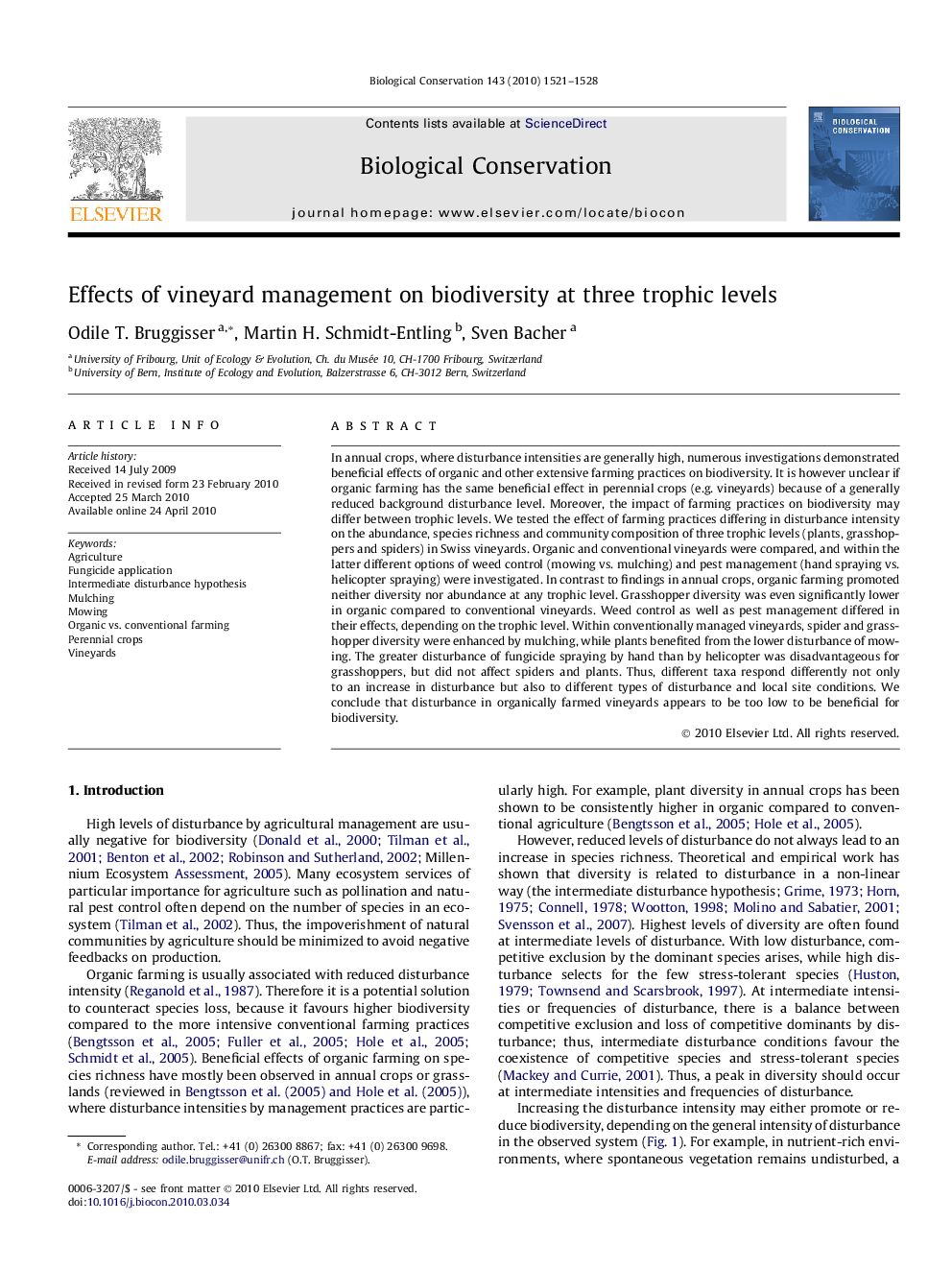| Article ID | Journal | Published Year | Pages | File Type |
|---|---|---|---|---|
| 4385588 | Biological Conservation | 2010 | 8 Pages |
In annual crops, where disturbance intensities are generally high, numerous investigations demonstrated beneficial effects of organic and other extensive farming practices on biodiversity. It is however unclear if organic farming has the same beneficial effect in perennial crops (e.g. vineyards) because of a generally reduced background disturbance level. Moreover, the impact of farming practices on biodiversity may differ between trophic levels. We tested the effect of farming practices differing in disturbance intensity on the abundance, species richness and community composition of three trophic levels (plants, grasshoppers and spiders) in Swiss vineyards. Organic and conventional vineyards were compared, and within the latter different options of weed control (mowing vs. mulching) and pest management (hand spraying vs. helicopter spraying) were investigated. In contrast to findings in annual crops, organic farming promoted neither diversity nor abundance at any trophic level. Grasshopper diversity was even significantly lower in organic compared to conventional vineyards. Weed control as well as pest management differed in their effects, depending on the trophic level. Within conventionally managed vineyards, spider and grasshopper diversity were enhanced by mulching, while plants benefited from the lower disturbance of mowing. The greater disturbance of fungicide spraying by hand than by helicopter was disadvantageous for grasshoppers, but did not affect spiders and plants. Thus, different taxa respond differently not only to an increase in disturbance but also to different types of disturbance and local site conditions. We conclude that disturbance in organically farmed vineyards appears to be too low to be beneficial for biodiversity.
